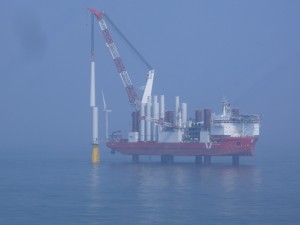Versatility: A versatile trenching vehicle can also be used for “multi-tasking” to keep the project flowing while costs from other expensive vessels are adding up. An OWF installation or O&G project involves many ships that are performing interdependent operations. One ship can easily be delayed by having to wait for another ship to complete its activities. Therefore, it is highly beneficial if the ROV host ship can convert any “down time” to productive work while it is waiting for another ship to finish its work. Some other tasks that a trenching ROV can also perform are: Post Lay Inspection & Burial (PLIB), Pre Lay Surveys (PLS), Touch Down Monitoring (TDM), foundation scour surveys and cable maintenance.
Post Lay Inspection and Burial (PLIB): Often, PLIB work will be required after a plough is used to bury cable. The “plough up” and “plough down” operations will leave sections of the cable exposed at each end of the run and at any cable crossings. Returning with a jetting trencher at some point may be the only way to complete the burial. Fortunately, the final “as built” survey data could also be collected at this time as well.
Cable Maintenance: A trenching ROV can also be used to perform various other operations if fitted with the correct equipment. With its robotic arm, the ROV operator could simply grab and move cable or other potentially problematic objects found on the sea floor. Special tooling is also used to perform and “cut and grab” that allows the vessel to pull up and retrieve problematic cable. If operational down time can be avoided, any extra cost to buy or lease a new vehicle could be recouped in days or weeks by preventing extra ship days charged at expensive day rates.

Deck Layout: A trenching system will generally allow more deck layout flexibility than a plough system that must be deployed over the stern. Because it is self-propelled and not towed, a trenching ROV can be stern or side launched depending on how it is mobilized on the host vessel.